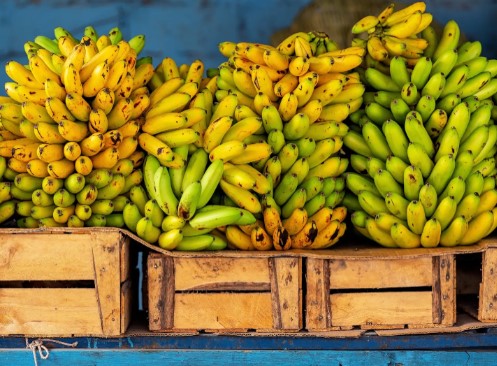Adventure travelers discover Ecuador’s history through its rich diversity of food
By Juliet Kinsman
“Everything is bigger in South America,” smiles Fernando Polanco, the owner of Hacienda Zuleta, as he wields an eye-wateringly large star fruit. We’re on his family’s 17th-century, 4,500-acre working dairy farm and ranch. Zuleta, which is  two hours north of Quito, has a big history, a huge heart, and charming accommodations. A great example of the positive, trickle-down impact that tourism can have, Fernando explains to me that his ancestors were among the first to give deeds back to the people, gifting slopes along with titles.
two hours north of Quito, has a big history, a huge heart, and charming accommodations. A great example of the positive, trickle-down impact that tourism can have, Fernando explains to me that his ancestors were among the first to give deeds back to the people, gifting slopes along with titles.

Ecuador’s Amazon rainforest is exceptionally rich in biodiversity.
The all-sensory-smacking fruit and veggies are extra special here, Roque points out, “due to the dramatic temperature drops at night, which fixes the fragrances and colors.” Ecuador has been the world’s top exporter of bananas since the 1960s. The special conditions also explain the world-leading caliber of their roses. Everywhere you turn in this city, you see breathtakingly beautiful bouquets.
Ecuador’s take on ceviche was another surprise for my senses. Heladería Restaurante in San Agustín began life as a sweet shop in 1858, and spicy, zingy, fresh lime-cured fish is now a specialty that draws crowds. Other treats here tell stories about the local culture, including the iced cupcakes chimborazos, named after the highest, snow-capped volcano in the Northern Andean Volcanic Zone.
What’s noticeable in Ecuador right now is a lack of tourists. Chats with Thiago, on the table next to me at Heladería Restaurant, give rise to why they are so happy to hear I’m visiting from overseas. The lack of travel during the pandemic meant a sudden end to vital tourism revenue — and this, in part, is what has led to civil disruption in isolated coastal spots far from my orbit close to the capital. It’s so important as travelers that we recognize when activity is restricted to certain areas and not abandon the whole country — such as the wildlife-rich and super-safe Galápagos Islands.

Ecuador has been the world’s top exporter of bananas since the 1960s.
The power of ethical food supply chains to unlock positive impact comes into sharp focus at Mashpi Lodge, a design-forward retreat with scores of species of hummingbirds. For me, it is the flower-garnished organic flavors of the forest that leave the sweetest taste. Obsessing about the end products on a plate in front of us has more gravitas when you know how the ingredients came to be, and the role they play in local culture and the economy.
“We wanted to grow all our own food when we opened in 2012, but the soil was too moist,” Luis Fernando Cárdenas Vera, the lodge’s executive chef, tells me. “But the chefs make the most of colorful herbs, such as mountain garlic and coriander-like chillagua, and we buy the rest from nearby growers.” The business is also supporting local farmers to rewild to create a much-needed wildlife corridor. Restoring a balance in nature while respecting the need for locals to earn money is dependent on hotels such as Mashpi bringing in international visitors.

The high-end Mashpi Lodge, in the rainforest north of Quito, is favorite with international birdwatchers.
Only 2% of Chocó Forest (which straddles Ecuador and Colombia) remains, so knowing that funds from stays at Masphi Lodge are helping tackle the loss of these lands to logging and mining is all the more nourishing. Carolina Proaño-Castro, who runs Fundación Futuro — the charity partly funded by Metropolitan Touring’s hospitality, including Mashpi — tells me how the delicious jams at breakfast, labelled La Guapa, play a big part. Fruits of the labor of the Association of Women Entrepreneurs of Guayabillas, La Guapa is a social enterprise kickstarted by the foundation’s community outreach. Its name, meaning pretty in Spanish, is also the portmanteau of two local towns, Guayabillas and Pacto.
Wiggling our way from Mashpi in a 4×4 through twisting forest lanes, we arrive at an unassuming two-story home in the jungle. Downstairs, below the decking, a door opens to a lab-like kitchen. This pristine space is where the cooperative of women work their condiment-making magic. In a macho nation where it’s still mostly men in suits in charge, it is heartwarming to hear how this collective is a lifeline for women and single mothers. “Yo me siento muy emocionada porque estamos haciendo nuestro sueño realidad,” Lilia Lema, tells me (“I am very excited, because we are making our dreams come true”).
Lilia proudly shows us jars of marmalades made from borojó, salak (snake fruit), arazá, and dried delights such as fruta chicle, the ‘chewing gum fruit’. Women — particularly those in rural areas — are most affected by economic crises and climate change, so those jams don’t only attest to the big flavors coming out of the Andean Chocó Biosphere Reserve. They’re a delicious reminder of the power of luxury travel to support nature and sustainable livelihoods in remote communities, thanks to the ripple effect of our adventuring.
________________
Credit: Conde Nast Traveler

















